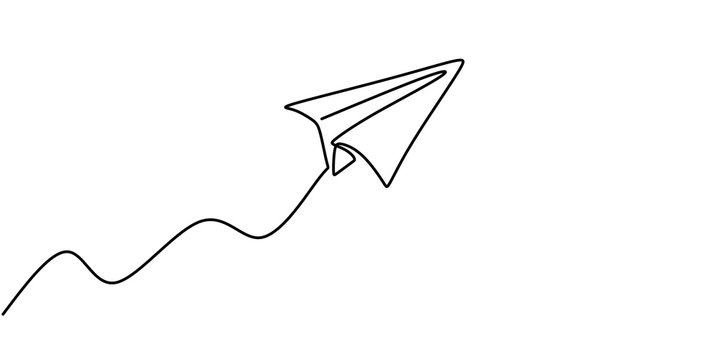A distinctive and classic artistic medium, line art creates images by drawing lines, frequently without gradations of color or shade to depict two- or three-dimensional things. This art form is a popular choice for many artistic applications, such as anime and tattoos, because of its elegance and simplicity. We examine various aspects of drawing line art in this article.
Art History: The Origins of Line Art Drawing

Line art has been around for around 75,000 years. The earliest known human drawing was discovered on a rock fragment in South Africa and is thought to be 73,000 years old.
Line art has come a long way in craft over time. Strong line art was produced by some of the most well-known painters of today, such as Leonardo da Vinci and Pablo Picasso. The pieces are sometimes seen as “studies” or forerunners to the painted masterwork they would later produce.
Both historical and contemporary fashion illustrators use line art to translate their ideas onto paper before pulling them to life with textiles. View designers’ interpretations of line art by flicking through your favorite designer’s Instagram account or by turning on an episode of Project Runway.
Some artists use line art as their main medium of expression rather than as a tool to achieve a goal.
Why Line Art Drawing is a Good Skill for Any Artist

There’s a reason why line drawing appeals to so many artists as a self-expression medium and practice. You may investigate and comprehend the world surrounding you by using line drawing. It might serve as a springboard for more complex techniques, like painting or digital art, or it can just be one possibly even your main method of expressing your ideas.
It’s the cornerstone of every excellent piece of art. It’s the framework on which a masterpiece is built, similar to bones in the human body, the speaker claims.
Line art, whether it be a brushstroke or a pencil line, an exercise in in-the-moment observation, or [transferring a conceptual idea onto paper], can help you develop a close relationship with the outside world.
Make use of basic materials and avoid deleting them. Don’t let other people’s expectations weigh you down, and give them a crayon and some paper if they glance over your shoulder. And keep smiling; you’re drawing!
The Essence of Line Art Drawing
Drawing with lines entails using the lines to create images. Although these lines might differ in length, thickness, and style, they usually keep the same, unshaded appearance.
How to Draw Flower Line Art
The delicate beauty of nature is captured in flower line art with such grace and simplicity that it is highly praised. Here’s how to make your floral line art:
Select Your Flower: Pick a flower, such as a daisy or rose, that has unique forms and characteristics.
Describe the Shapes: Draw the flower’s basic contour lightly, utilizing basic shapes like ovals and circles.
Provide Specifics: Add features like flowers, leaves, and stems by drawing thin lines and paying attention to the textures and curves.
Complete the Drawing: Erase any extraneous sketch lines and darken the final lines.
How to Draw One-Line Art
Continuous line drawing, also known as one-line art, entails drawing a whole picture without ever picking up a pen or pencil. This is how you go about it:
Organize Your Illustration: Consider the complete image and make a plan for using a single line to browse it.
Commence Simple: Start with more basic forms and work your way up to more intricate topics.
Fluid Motions: To keep the line intact, move your hands in a fluid and steady manner.
Practice: To increase your competence and confidence, use this strategy regularly.
How to Draw Abstract Line Art
Artists can delve further into deeper ideas or emotional areas using abstract line art. The following is a how-to for making abstract line art:
Obtain Motivation: Examine a variety of abstract paintings to obtain ideas.
Begin with the shapes: Start with arbitrary lines and geometric shapes.
Experiment: Try experimenting with various junctions, directions, and line weights.
Establish Patterns: Create designs or random patterns that express movement and emotion.
How to Draw Simple Line Art
The emphasis of simple line art is on using a few lines to produce powerful visuals. Here’s where to begin:
Choose a Topic: Select a topic that is easy to understand, such as an object or animal.
Outline: Use some continuous lines to draw the basic outline.
Refine: Make the lines simpler so that they convey the main idea of the topic without extraneous information.
Review: Ensure that the image is distinct and easy to see by adjusting the lines.
How to Draw Minimalist Line Art
Images are stripped down to their most basic components in minimalist line art. Take these actions:
Select a Topic: Choose a subject that requires the least amount of detail to be represented.
Describe the Main Elements: Using crisp, precise lines, list and describe the subject’s salient characteristics.
Employ Negative Space: To improve the composition’s simplicity and balance, use negative space.
Refinement: To keep the minimalist look, keep the lines consistently smoother.
How to Draw Rose Line Art
Here’s a guide to help you draw a line art rose that captures all of its intricate details:
Basic Outline: Begin with a light sketch of the rose’s basic shape.
Petals: Add the petals, emphasizing their distinct shapes and arrangements.
Details: Add fine details, such as the veins on the petals and leaves. Finalize: Darken the final lines and tidy up the sketch
How to Draw Line Art Tattoos
Simple, unshaded lines are used in line art tattoos to produce eye-catching designs. This is how to create one:
Idea: Select an idea or motif for the tattoo.
Sketch: Draw a simple outline of the design.
Refine Lines: To guarantee that the design will appear excellent on the skin, pay attention to crisp, clear lines.
Consult: To fine-tune the design for tattooing, if at all possible, confer with a tattoo artist.
How to Draw Anime Line Art
Dynamic action and expressive characters are the main features of anime line art. This is how you sketch it:
Study Anime: View anime and take note of the various styles’ linework.
Character Outline: Draw the character’s fundamental contours.
Details: Include specifics like hairstyle, facial characteristics, and well-fitting attire.
Practice: To capture the lively and expressive quality of anime characters, practice regularly.
How to Draw Butterfly Line Art
The delicate nature of butterflies is portrayed in line art. Take these actions:
Select a Butterfly: Choose a species of butterfly to sketch.
Describe the fundamental contours of the butterfly.
Wings: Draw attention to the fine lines that make up the complex designs on the wings.
Details: Include specifics like body segments and antennas.
How to Draw Horizon Line Art
Horizon line art uses straightforward, continuous lines to explore landscapes. This is how to make one:
Choose a Scene: Select a scene of a landscape, like the ocean or mountains.
Outline: Sketch the primary features and the basic horizon line.
Details: Include details with continuous lines, such as trees, waves, or clouds.
Refinement: Make sure the lines are simple and clear.
The Timeless Appeal of Line Art
Line drawing has always been popular because of its capacity to express complicated concepts and feelings straightforwardly. Line art eliminates unnecessary details and highlights the essential components of structure and form, revealing the true nature of the topic. In addition to being visually arresting, this minimalist approach has a contemplative effect that can be both comforting and motivating.
Techniques and Tools for Creating Line Art
Some basic equipment and methods are needed to create line art. To attain the necessary clarity and precision, artists usually employ digital tools or fine-tipped pens and pencils. The media used for an artwork is frequently determined by the particular requirements of the piece as well as personal taste. For example, classic ink pens are preferred because of their clear, sharp lines, but digital instruments are more flexible and easier to edit.
Practicing Line Art: Tips for Beginners
To become proficient at line art, one must practice and experiment. Begin with basic topics and work your way up to more intricate compositions. Here are some pointers to get you going:
- Emphasis on Contours: Start by describing the subject’s fundamental outlines and contours. This will assist you in comprehending the basic framework before introducing specifics.
- Play Around with Line Weight: You may give your artwork more depth and dimension by adjusting the thickness of your lines. For outlines, use thicker lines; for details, use thinner lines.
- Maintain Simplicity: Accept the simplicity of line art. Don’t let extraneous details distract you from your goal of expressing the core of your subject.
- Practice drawing in one line: Try out these continuous line drawing activities to enhance your creativity and flow.
- Examine Various Styles: Look through a variety of line art styles, such as anime and flower line art, to see what speaks to you and sparks your imagination.
The Future of Line Art
The prospect for line art increases with technological advancements. Artists now find it simpler to produce, share, and work together on online art projects thanks to digital tools and platforms. Furthermore, line art has become ubiquitous because of the growing recognition of minimalist and tattoo art, guaranteeing its continued relevance and allure.
To sum up, line art is a timeless and adaptable medium for artistic expression that values originality, grace, and simplicity. There is a place for every person in the world of line art, regardless of your preference for the delicate appeal of floral line art, the smoothness of one-line art, or the metaphorical depth of rose line art. Accept the classic, minimalist appeal of this medium and use the strength of lines to express your ideas.

